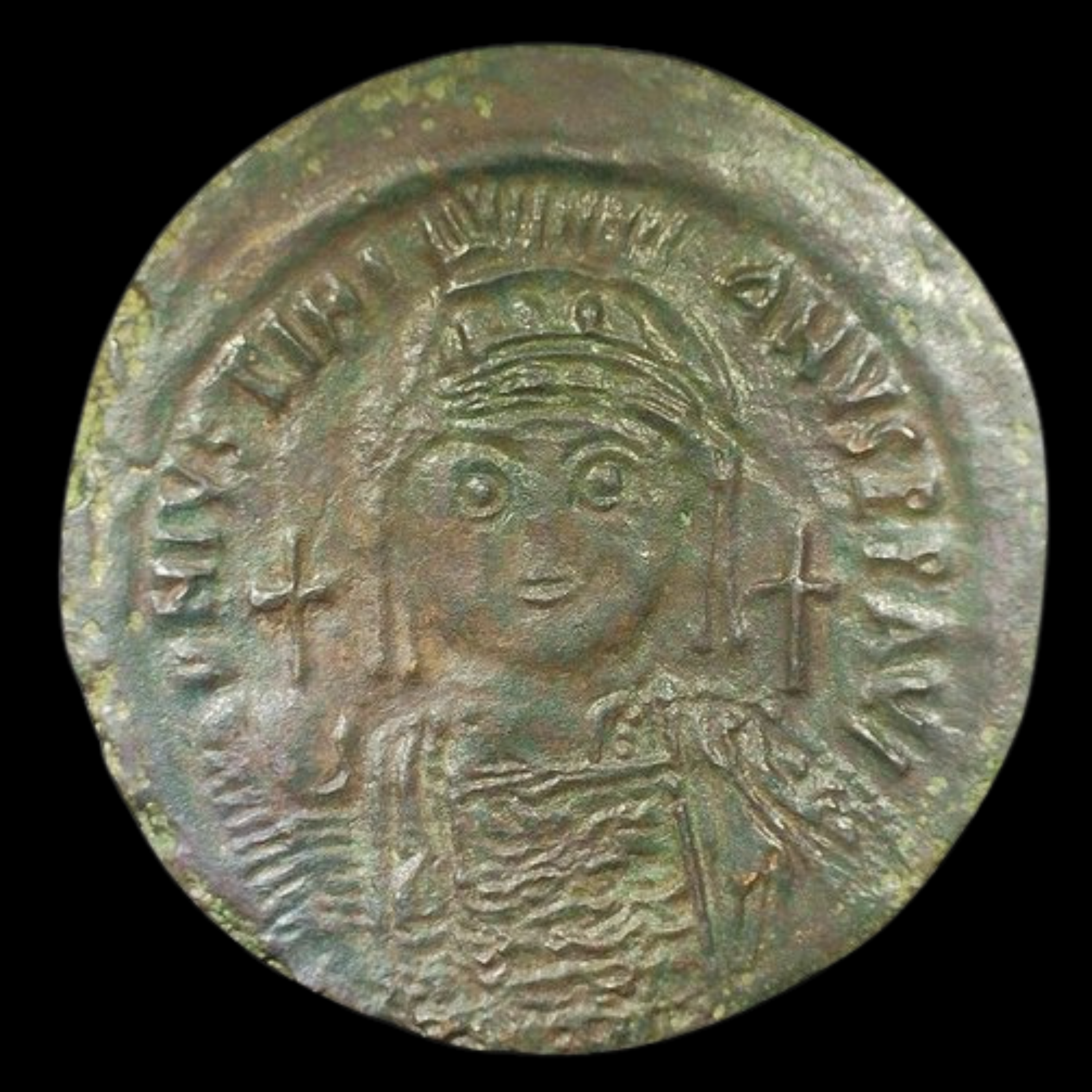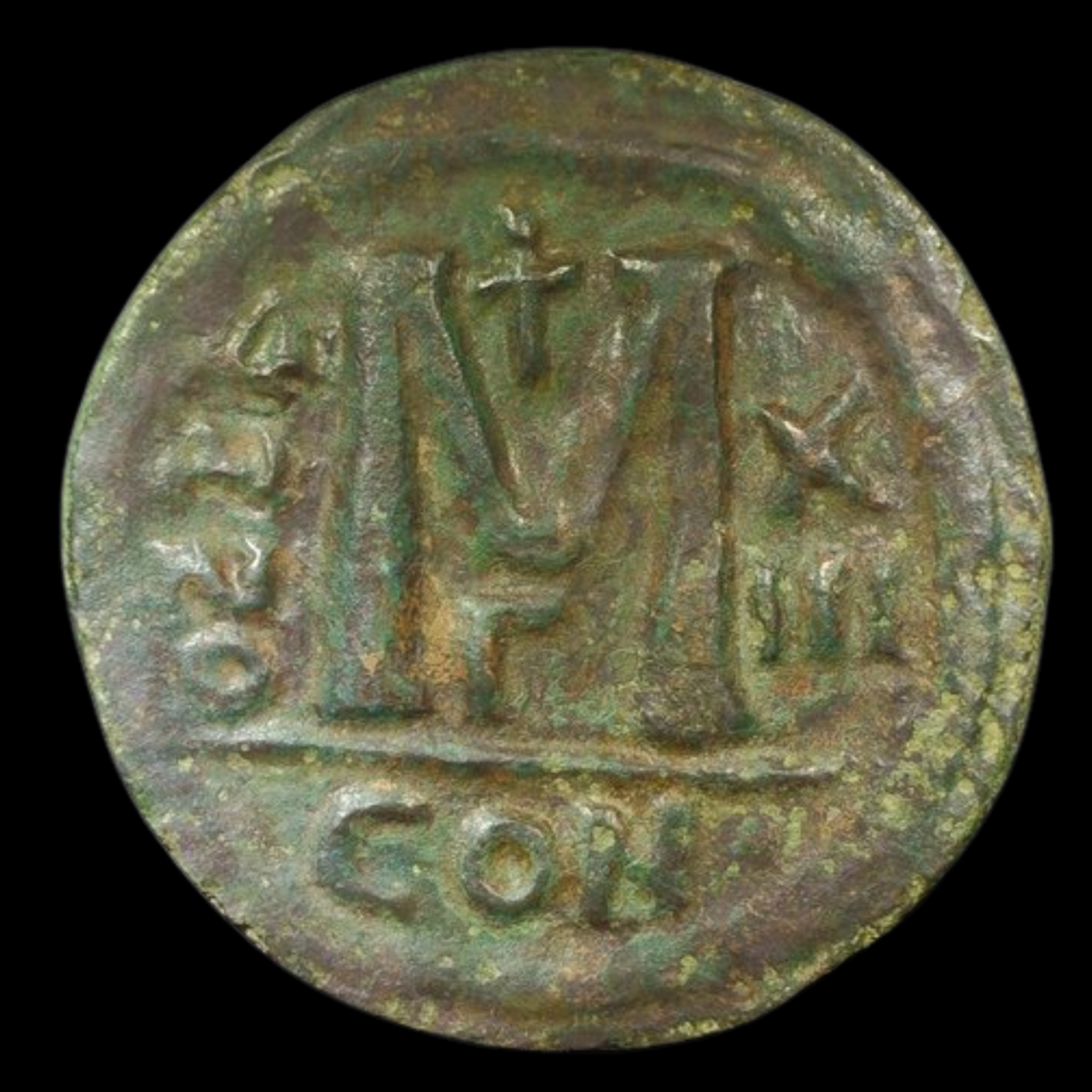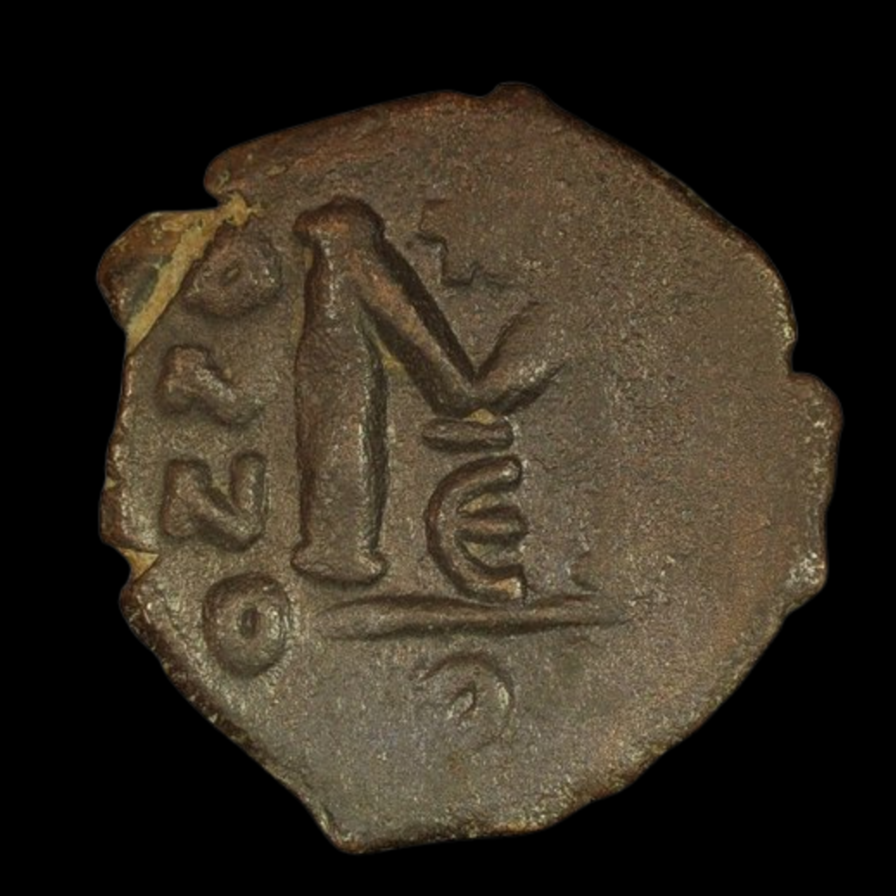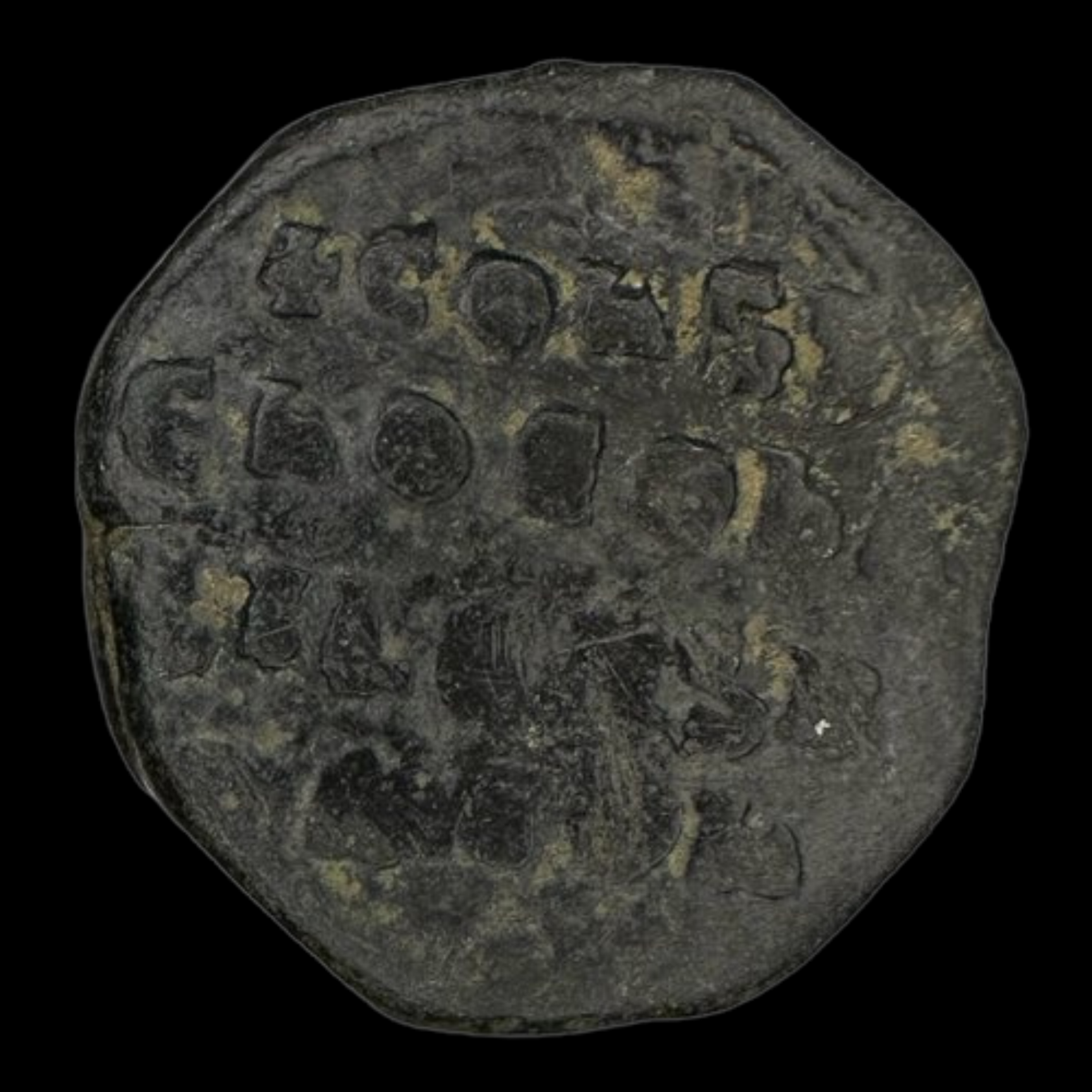 Image 1 of 1
Image 1 of 1


Byzantine Bronze Follis of Justin II and Sophia (about 1,450 years ago)
This is a bronze follis issued during the joint reign of Byzantine Emperor Justin II and his influential wife Sophia. Minted throughout the Byzantine Empire (centered in modern-day Turkey), this coin represents the imperial authority during a challenging period in the empire's history.
Coin Description:
Front side: Depicts Emperor Justin II and Empress Sophia seated on a double throne, facing forward, wearing imperial regalia and crowns. Both figures hold scepters, symbolizing their shared power.
Back side: Features a large letter "M" (representing the denomination of 40 nummi), with a cross above, the date of reign below, and the mint mark indicating where the coin was produced.
Technical Details:
Material: Bronze
Denomination: Follis (worth 40 nummi, a standard unit in Byzantine currency)
Minting date/period: 565-578 CE (approximately 1,450 years ago)
Condition: Varies by specimen
Historical Significance:
This coin circulated during a transitional period in Byzantine history following the death of Justinian the Great. While Justin II initially maintained stability, his mental health deteriorated in his later years, leading Empress Sophia to increasingly manage imperial affairs. These coins are notable for featuring Sophia alongside the emperor, reflecting her unusual political prominence and partnership in governing the empire during a time of mounting external pressures from Persians and Slavic peoples.
This is a bronze follis issued during the joint reign of Byzantine Emperor Justin II and his influential wife Sophia. Minted throughout the Byzantine Empire (centered in modern-day Turkey), this coin represents the imperial authority during a challenging period in the empire's history.
Coin Description:
Front side: Depicts Emperor Justin II and Empress Sophia seated on a double throne, facing forward, wearing imperial regalia and crowns. Both figures hold scepters, symbolizing their shared power.
Back side: Features a large letter "M" (representing the denomination of 40 nummi), with a cross above, the date of reign below, and the mint mark indicating where the coin was produced.
Technical Details:
Material: Bronze
Denomination: Follis (worth 40 nummi, a standard unit in Byzantine currency)
Minting date/period: 565-578 CE (approximately 1,450 years ago)
Condition: Varies by specimen
Historical Significance:
This coin circulated during a transitional period in Byzantine history following the death of Justinian the Great. While Justin II initially maintained stability, his mental health deteriorated in his later years, leading Empress Sophia to increasingly manage imperial affairs. These coins are notable for featuring Sophia alongside the emperor, reflecting her unusual political prominence and partnership in governing the empire during a time of mounting external pressures from Persians and Slavic peoples.










